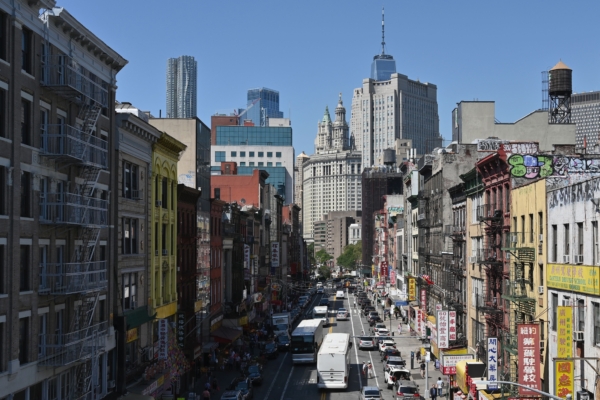On Wednesday, May 14th, the Asian American Federation (AAF) released a new report that comprehensively examined the demographics of several Chinese communities in New York City. The report revealed that Manhattan’s well-known and long-standing Chinese residential area – Chinatown (华埠) – is still shrinking, while Chinese neighborhoods in the outer boroughs such as Flushing in Queens and 8th Avenue in Brooklyn continue to thrive.
The report titled “Expanding Communities, Expanding Needs: Asian Communities in City Council Districts” took a comprehensive look at the growth, migration, and challenges faced by Chinese Americans in key mayoral and city council elections in New York City this year. It highlighted the prosperity of neighborhoods like Flushing and Sunset Park contrasted with the decline in Chinatown.
According to the report, the Chinese community in the city has over 631,000 residents, maintaining its status as the largest Asian ethnic group in New York City. However, the dynamics of the Chinese community are changing. District 20 (Flushing) remains the city’s largest center of Chinese population with over 80,000 Chinese residents; followed closely by District 43 (Brooklyn Sunset Park/Bensonhurst) with 68,000 Chinese residents. Other areas with significant Chinese populations include District 19 in Queens (Whitestone, College Point, Bayside, Little Neck, etc.), District 25 (Elmhurst, Jackson Heights, Woodside), and District 1 in Manhattan (Chinatown).
The report also analyzed the reasons behind the decline in Chinatown’s population, attributing it to the younger generation moving to other boroughs, leaving mainly elderly residents behind. The Chinese population in Chinatown has decreased by 8.7% since 2018.
Furthermore, the report found that English remains a barrier for the Chinese community. In Flushing, 70% of Chinese residents have limited English proficiency, the highest in the city; while in Sunset Park, Gowanus, and Fresh Meadows, over half of the Chinese residents face similar language challenges.
The report also noted that over 21% of Asian residents in Flushing live below the poverty line; 18% of households rely on SNAP (food stamps) benefits; and housing costs exceed 30% of income for many.
Additionally, the Chinese community is facing an increasingly severe trend of aging. Chinatown has the highest proportion of elderly residents (27.6%); Flushing follows with 21.4%, highlighting the urgent need for expanded elderly and health services.
According to the report, with the new boundaries of the electoral districts, the distribution of the Chinese population in the city makes their political participation more important than ever. Chinese voters are a significant force in Districts 20, 43, 25, and 19, with influence extending to Staten Island and the Bronx.
“The Chinese community has always influenced New York,” said Catherine Chen, Executive Director of the Asian American Federation in a statement. “This report reminds us that despite demographic changes and new challenges, their roots remain deep, and their contributions remain strong.”
Therefore, the report reminds Chinese community city council candidates to prioritize issues such as language access, affordable housing, elderly care, and economic stability.

